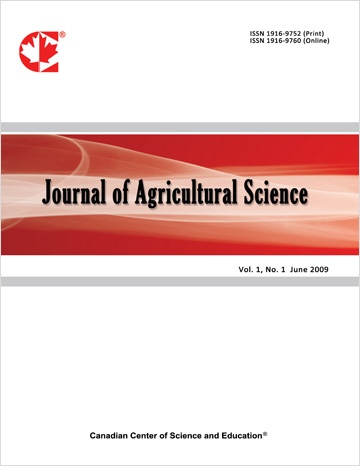Short-Term Soil Nitrous Oxide Emissions as Affected by Enhanced Efficiency Nitrogen Fertilizers and Temporarily Waterlogged Conditions
- Brendan Zurweller
- Peter Motavalli
- Kelly Nelson
- Christopher Dudenhoeffer
Abstract
Poorly-drained claypan soils in the Midwestern United States experience periods of short-term soil saturation shortly after pre-plant N fertilization, which may result in relatively large amounts of soil surface N2O emissions. Slowing the release or conversion of N fertilizer to soil NO3 early in the growing seasonthrough the use of enhanced efficiency fertilizers (EEF) could be an effective strategy for reducing soil N2O emissions and gaseous N loss during a period of relatively low plant N demand. The objective of this study was to determine the effects of short-term soil waterlogging and pre-plant applications of conventional and EEF on soil inorganic N and N2O emissions during and up to four days following a waterlogging event during the dry down period. A two-year field study planted to corn (Zea mays L.) was initiated in 2012 on a poorly-drained claypan soil in Northeast Missouri. Waterlogging treatments were initiated at the V6 corn stage of phenological development. Main plots consisted of no waterlogging or water ponded 7 to 13 cm above the soil surface for three days, and sub-plot N fertilizer treatments [non-treated control (CO), or preplant broadcast applications of 168 kg N ha-1 of urea (NCU), urea plus nitrapyrin nitrification inhibitor (NCU+NI), and polymer coated urea (PCU)]. In 2012, greater cumulative soil N2O-N emissions of 2.8 kg N2O-N ha-1 were observed with PCU in comparison to NCU over the entire seven day sampling period. A significant portion of cumulative soil N2O emissions were associated with the four day soil drying phase in 2012, where PCU and NCU+NI had greater emissions (1.9 and 1.2 kg N2O-N ha-1) compared to NCU. The proportion of N fertilizer lost as N2O-N averaged over all pre-plant N treatments during the 2012 and 2013 sampling periods in the non-waterlogged soils were 0.04% and 0.03%, and 1.1% and 2.6% in the waterlogged soils, respectively. These results suggest that a large proportion of the cumulative soil surface N2O emissions typically observed in these poorly-drained soils over a growing season may occur during and shortly after soil waterlogging events.
- Full Text:
 PDF
PDF
- DOI:10.5539/jas.v7n12p1
Journal Metrics
- h-index: 67
- i10-index: 839
- WJCI (2023): 0.884
- WJCI Impact Factor (2023): 0.196
Index
- AGRICOLA
- AGRIS
- BASE (Bielefeld Academic Search Engine)
- Berkeley Library
- CAB Abstracts
- ChronosHub
- CiteSeerx
- CNKI Scholar
- Copyright Clearance Center
- CrossRef
- DESY Publication Database
- DTU Library
- e-Library
- EBSCOhost
- EconPapers
- Elektronische Zeitschriftenbibliothek (EZB)
- EuroPub Database
- Excellence in Research for Australia (ERA)
- Google Scholar
- Harvard Library
- IDEAS
- iDiscover
- Jisc Library Hub Discover
- JournalTOCs
- KindCongress
- LIVIVO (ZB MED)
- LOCKSS
- Max Planck Institutes
- Mendeley
- MIAR
- Mir@bel
- NLM Catalog PubMed
- Norwegian Centre for Research Data (NSD)
- Open J-Gate
- OUCI
- PKP Open Archives Harvester
- Polska Bibliografia Naukowa
- Qualis/CAPES
- RefSeek
- RePEc
- ROAD
- ScienceOpen
- Scilit
- SCiNiTO
- Semantic Scholar
- SHERPA/RoMEO
- Southwest-German Union Catalogue
- Standard Periodical Directory
- Stanford Libraries
- SUDOC
- Swisscovery
- Technische Informationsbibliothek (TIB)
- Trove
- UCR Library
- Ulrich's
- UniCat
- Universe Digital Library
- WorldCat
- WRLC Catalog
- Zeitschriften Daten Bank (ZDB)
Contact
- Anne BrownEditorial Assistant
- jas@ccsenet.org
